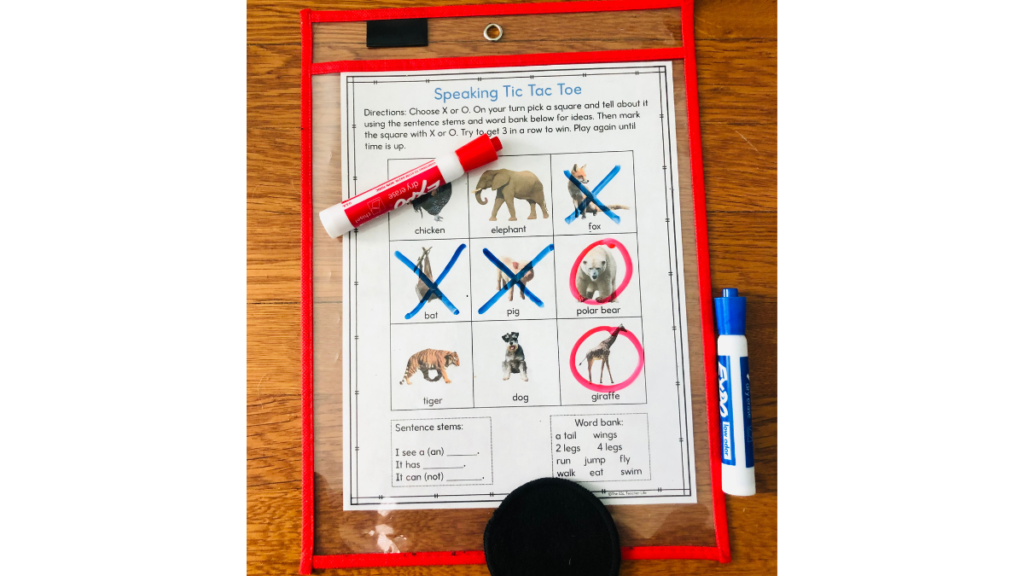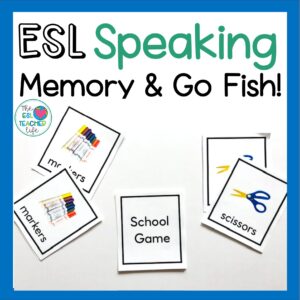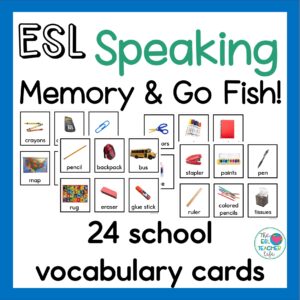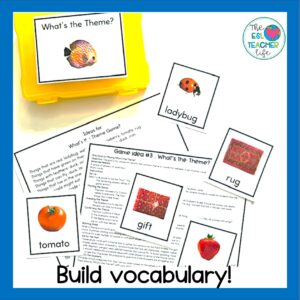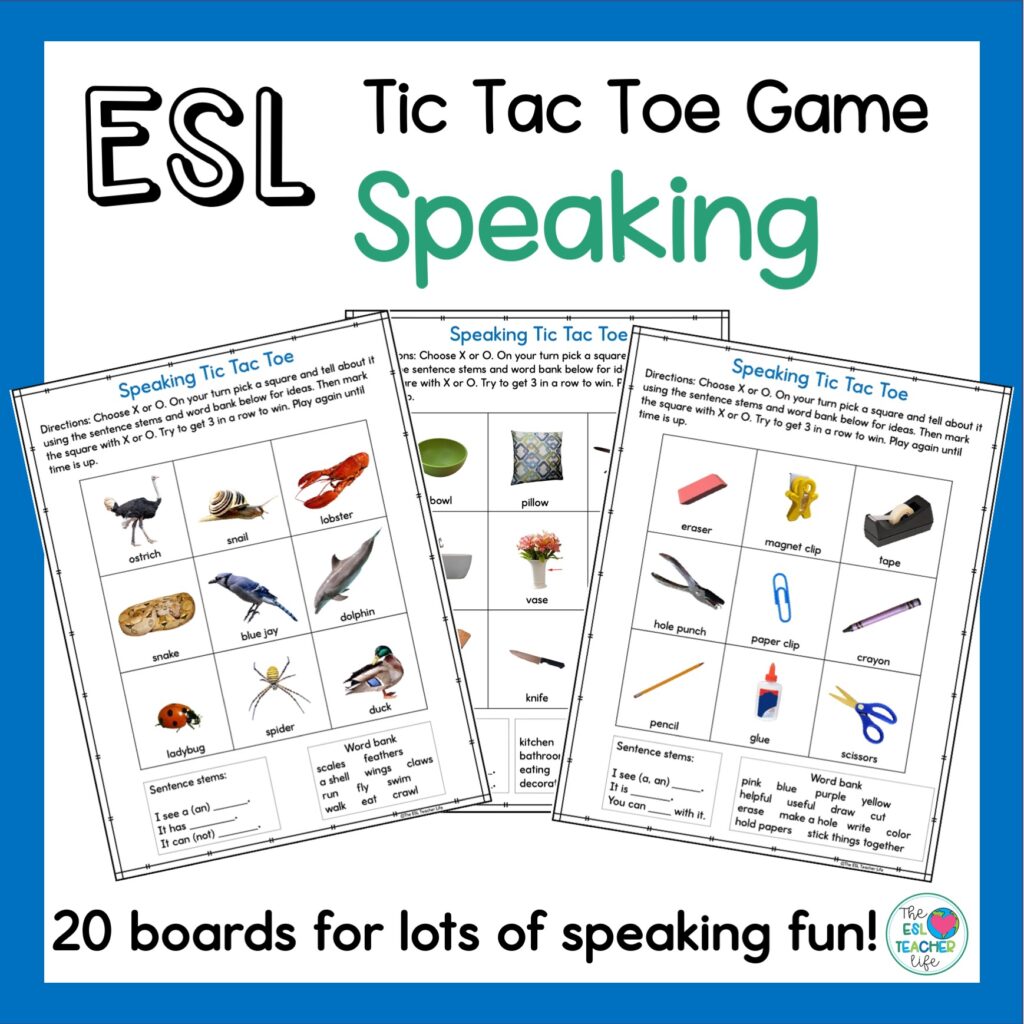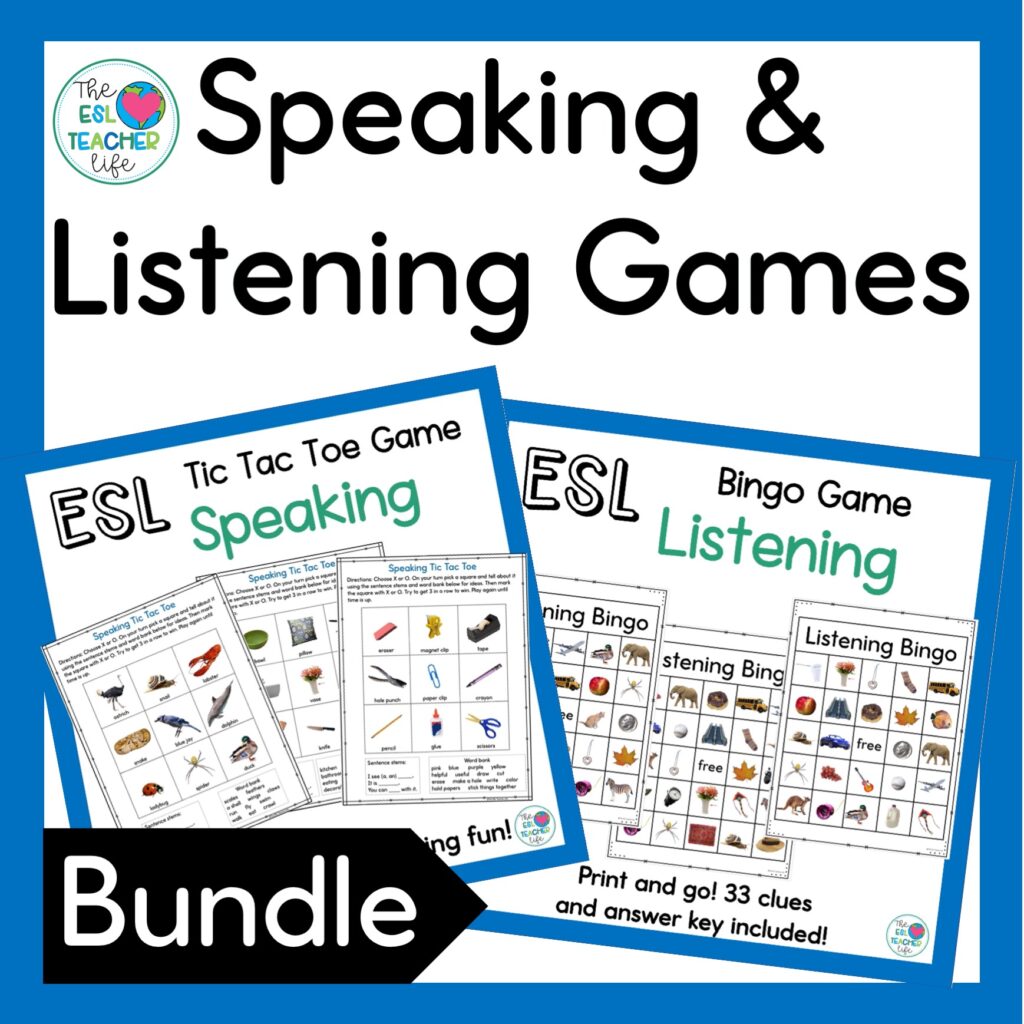Are your beginner multilingual learners quiet or hesitant to talk? Try adding some games to your routine! There are many benefits to playing speaking games in the ESL classroom. High engagement, lower anxiety, increased motivation, and lots of embedded language practice are just a few! Here are 5 ESL speaking games to get you started. (Wish someone would just do it for you? For my speaking and listening games bundle pop down to the bottom for the link to my bestselling Speaking and Listening Games bundle!)
Speaking Tic Tac Toe
The first of the ESL speaking games is Tic Tac Toe with a twist!
Click on the photo above for a link to this resource, or to make your own, follow these steps:
1. Make a tic tac toe board with 9 different pictures or objects.
2. Then, prepare one tic tac toe board per pair of students. (Put it in a plastic sleeve or laminate for multiple uses.)
3. Next, group students in pairs. One is X, one is O. (You can also use two color counters and each student gets a color.) Students will take turns describing the object in a square and mark it with X or O. Students will take turns and try to get 3 in a row to win. In an effort to encourage as much speaking as possible, three sentences should be used for each picture. ( Or whatever you think is just right for your students.)
4. Play continues until there is a winner. Students can play again and again for practice, and change out the pictures or objects as desired.
*Provide sentence stems to work on sentence structure and word banks to support vocabulary.
Guess the Mystery Object

The second of the ESL speaking games is Guess the Mystery Object.
- Prepare a collection of objects or pictures of objects related to a specific theme. For example, if the theme is “food,” you can have objects (or pictures) like a spoon, a banana, a cookie, etc.
- Place the objects or display the pictures in the center of the classroom or on a table where all students can see them. Then place them in a bag or bin.
Divide the students into pairs or small groups.
One student from each group takes turns choosing an object or picture without showing it to their partner(s).
The student who picked the object describes it to their partner(s). They can provide details about the object’s shape, color, size, function, and any other relevant information.
The partner(s) listen carefully to the description and try to guess the object.
Once the partner(s) make a guess, the student who chose the object reveals it. If the guess is correct, they can switch roles and continue with a new object. If the guess is incorrect, they can provide additional hints until the object is correctly identified.
Repeat the process, allowing each student to have a chance to describe and guess objects.
ESL speaking games like this one encourage students to use descriptive language, practice vocabulary related to the objects, and engage in active listening. You can adapt the game by incorporating different themes or vocabulary sets based on the students’ learning objectives.
Go Fish!
To play the third ESL Speaking Game, Go Fish!, you just need a two sets of the same vocabulary cards. For the resource above which also includes speaking support, click on either image above. If you already have cards you wish to use, depending on how many students are playing, I give them 5-7 cards each. The rest of the cards go in the Go Fish! pile. Students simple take turns asking “Do you have __?” to try and make a pair. Play continues until someone is out of cards or the pile is gone. Count up how many pairs each person has. I love this game for the beginning of the year. It give students a fun way to practice asking for what they might need.
"Simon" Says

The fourth ESL speaking game idea is Simon Says. This classic game helps reinforce vocabulary, listening comprehension, and following directions.
1. Choose a student to be “Simon” (the leader). You can switch to using the leader’s name of course!
2. “Simon” gives commands starting with “Simon says,” such as “Simon says touch your nose” or “Simon says jump three times.”
3. The other students must follow the command only if it is preceded by “Simon says.” If they follow a command without “Simon says,” they’re out of the game.
4. Keep playing, changing the leader after a few rounds.
You can work on specific skills such as using body parts vocabulary in the commands (“Simon says touch you shoulders”), school supplies (“Simon says hold up a green crayon”), actions (“turn around two times”), and any other topic you wish to practice.
What's the Theme?
The goal of this speaking game is for players to identify the common theme or connection between a set of photo cards provided by the teacher or student host. You need a set of photos that have things in common. Demonstrate for students how to select cards such as “things that are red” from the photo above. Students try to guess what they have in common. For more information of this resource with ideas for you to use and 2 other games you can play with the same cards just click on the photo above.
To save you time, these tic tac toe boards with sentence stems and word banks are all done for you. Great for beginners! To check them out, just click on the resource above!
And for even more options, check out the money saving speaking and listening games bundle!

